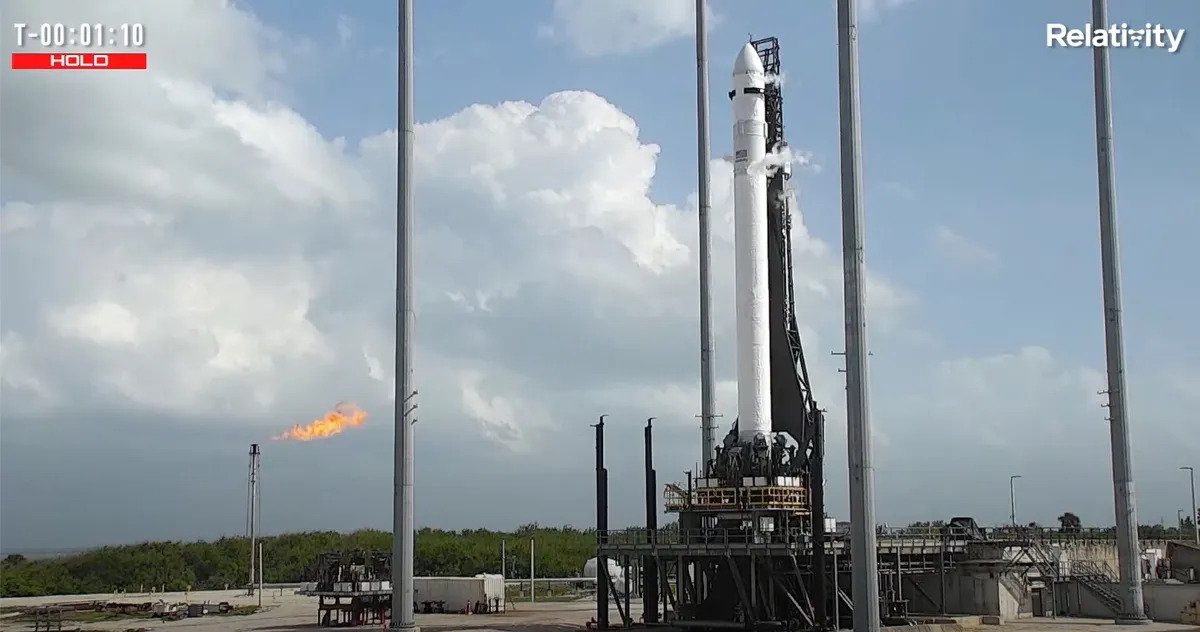The launch of the world’s first space rocket Terran 1, fully printed on a 3D printer, was to take place on the night from Saturday to Sunday. However, 45 seconds before the launch, Relativity Space stopped it and announced that it would announce the date of a new attempt later.

Launch of Terran 1 is canceled
The first launch of the Terran 1 rocket was to take place on Saturday at exactly 11:00 p.m. local time, or at six in the morning on Sunday in Kyiv. It was this deadline that was set by Relativity Space, which developed this carrier, after the first attempt to launch it on March 8 was canceled 70 seconds before launch due to the fact that the fuel temperature in its upper stage did not meet the requirements.
At that time, experts assured that it would be possible to launch it in at least three days. However, on Saturday, the launch attempts were interrupted again for various reasons. The last one took place late in the evening. Then the automation stopped the launch already at the start of the propellers 45 seconds before the carrier was supposed to break away from the launch pad.
What exactly is wrong with the rocket this time has not yet been reported. But Relativity Space is urged to follow their messages so as not to miss this event.
First 3D-printed rocket
The launch of Terran 1 should be a landmark event for several reasons at once. The most noticeable of them is that this is the first rocket, the vast majority of the details of which are printed on a 3D printer. Thus, Relativity Space tried to significantly reduce the cost of launching and make them massive.
With a height of 33.5 m and a diameter of 2.2 m, Terran 1 is one of the world’s largest 3D-printed objects. It should put a cargo of 1,250 kg into orbit. And this is not the limit, because Relativity Space plans to create an even larger version of the rocket called the Terran R.
No less sensational are the ten Aeon 1 engines that are used on its two stages. In addition to the fact that they are also made using 3D printers, they are also interesting for the fuel used in them. After all, these are the first methane-oxygen movements to be used in space.
At the same time, it should be noted that Relativity Space enjoys a great credit of trust. They have not launched a single rocket of their own yet, but at the same time there are already orders for putting a spacecraft into orbit.
So it is in their interests that the first launch, which will be a demonstration and during which nothing will be put into orbit, be as successful as possible.
According to phys.org
Follow us on Twitter to get the most interesting space news in time
https://twitter.com/ust_magazine

